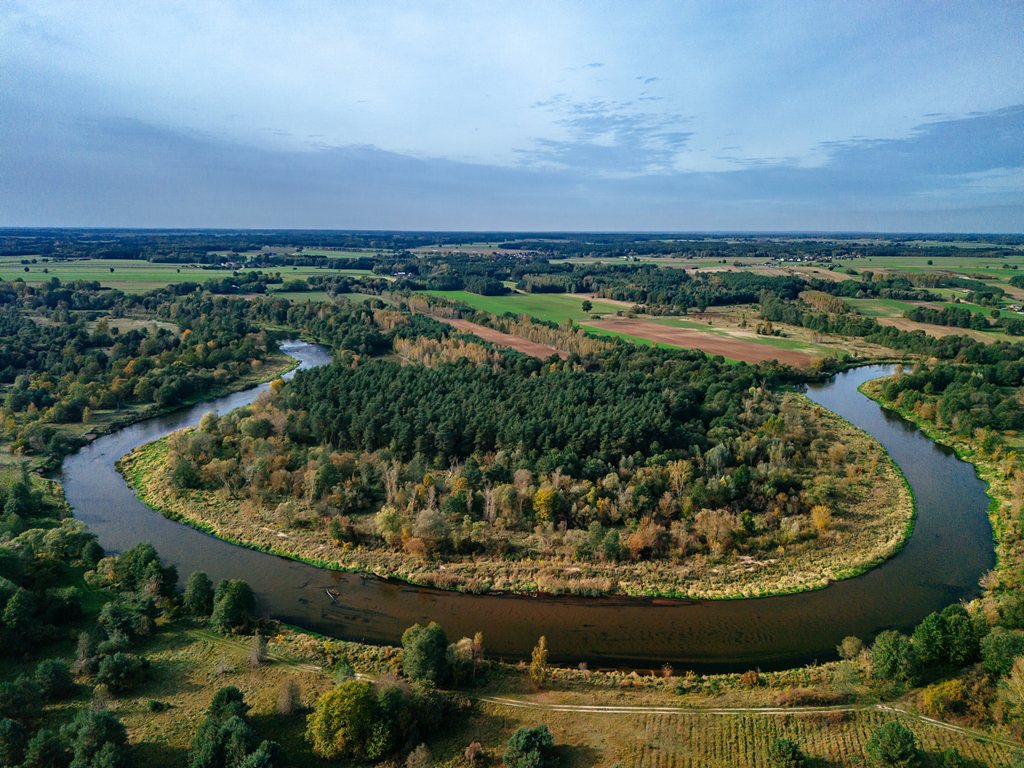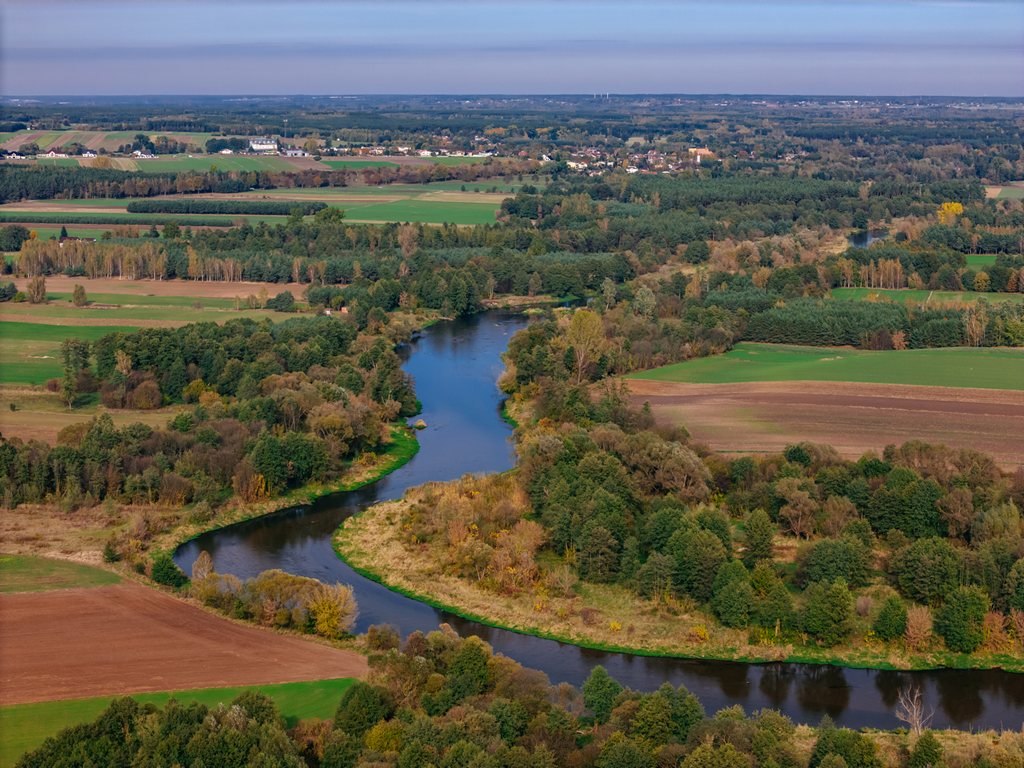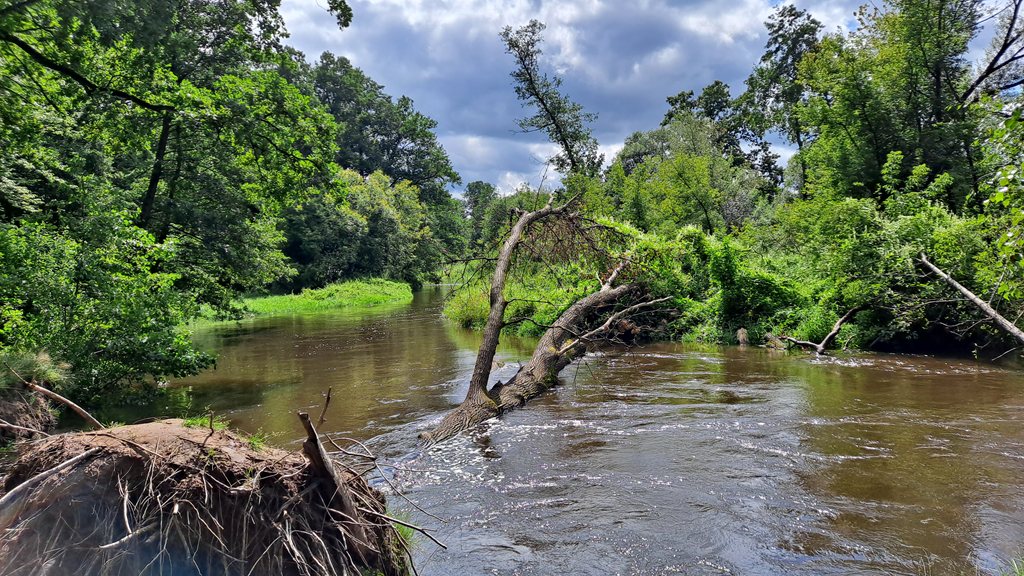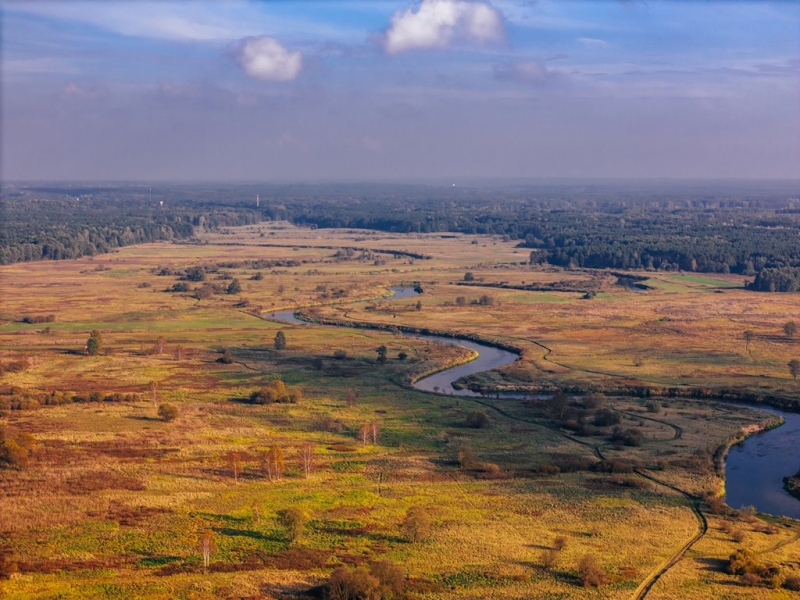Lodzkie for water lovers
The water routes of the Lodzkie region are a guarantee of great fun, plenty of emotions and unforgettable experiences, and at the same time, rest and relaxation close to nature. Thanks to grants from the Marshal’s Office of the Lodzkie Region, you can enjoy the extensive associated infrastructure, and investments made by local authorities serve the development of water tourism in our region.
Pilica

It’s a good idea to start your kayaking adventure in the Lodzkie region on the Pilica River. The river, surrounded with landscape parks — Przedbórz Lanscape Park, Sulejów Landscape Park and Spała Landscape Park — meanders picturesquely among vast meadows, forests and marshes. For family kayaking trips, we recommend the 19 km route from Tomaszów Mazowiecki, which leads through the meanders of the Spalski forest to Inowłódz. It takes about 3.5 hours and does not cause any major difficulties. You must see the Niebieskie Źródła reserve (Blue Springs), the Open-Air Museum of the Pilica River and Inowłódz, with the Romanesque church of St. Giles (12th century) and the partially reconstructed ruins of Casimir the Great's castle (14th century).The most beautiful part of the trail is the one from Inowłódz and Zakościele to Mysiakowiec. Kayaking tourism is facilitated by a well-developed accompanying infrastructure. Many rest areas have been created along the route, including in Spała, Inowłódz, Kozłowiec and Mysiakowiec. Arbors with benches and tables have been set up at boat landings, as well as racks for storing kayaks. In addition, in Spała and Inowłódz tourists can use new sanitary facilities. Investments to support kayaking tourism were also made in Łęgi and Grotowice. In the "Zacisze" Recreation Center in Spała you can spend the night here and rent a kayak.

Warta

The Warta river, photograph D. Kwapisiewicz
The river can be a great idea for a pleasant relaxation away from the hustle and bustle of the city. As you float down the river, you can admire picturesque islands, meanders and oxbow lakes. There are many forests, escarpments and ravines on the shore, and the area is full of karst phenomena, such as caves, monadnocks and karst springs. The most interesting part of the trail is the one from Działoszyn to Przywóz. The route leads through the beautiful landscape of the Załęcze Meander of the Warta River, providing tourists with an extraordinary aesthetic experience. This section of the trail is 28 km of beautiful adventure, for which you will need about 5–6 hours, and with the newly developed stopping places at Lisowice and Bobrowniki, covering individual sections can be spread over the whole day. Experienced paddlers are welcome to join longer trips with overnight stays, of which there are many places in the river area. For more experienced kayakers, a great idea would be a multi-day trip with an overnight stay in Osjaków . A special event, taking place about 2 km from the Warta River, which attracts tourists from all over the world, is Corpus Christi in Spycimierz – the villagers have been creating flower carpets for over 200 years. This unique tradition was added to the UNESCO list in 2021.

The Warta river, photograph D. Kwapisiewicz
Bzura
After Pilica and Warta, we continue our trip. This time on the Bzura. It is a typical lowland river with a rather gentle current, but it is not without weirs and rapids, and in some sections there are portages or a faster current requiring more caution and attention. The rich fauna and flora attracts more and more nature and kayaking tourism enthusiasts. This has contributed to the development of the local infrastructure. The river is well signposted, and so-called floating jetties have been built in Walewice, Strugienice, Klewkowo and Kompin.
On the route of the rafting trip, we especially recommend visiting the Gothic royal castle in Łęczyca, built on the initiative of Casimir the Great, which currently houses the Museum of the Łęczyca Region. It is here that you can admire the largest collection of sculptures in Poland depicting the devil Boruta - the legendary ruler of the castle, and the castle courtyard is the setting for one of the largest knight tournaments in the country.
Rawka

Finally, we get to a real gem, the Rawka. Its bed is unregulated and its banks are abundantly covered with lush vegetation. It presents itself best at the section of the Bolimów Landscape Park. The entire length of the river is a nature reserve, so before kayaking, remember to obtain a permit from the Regional Director of Environmental Protection by submitting an appropriate application. However, this is not a problem and the procedure takes a relatively short time. The tourist base here is well-developed but it is still worth thinking about booking kayaks in advance, especially in the summer season when the traffic is really heavy. The Rawka, due to its wild character, is a demanding river, ideal for more experienced paddlers. Fallen tree trunks necessitate numerous portages and the rapid current may even capsize the kayak. The Rawka is definitely one of the more extreme rivers, where you need to make use of your physical fitness and technical skills.

The Rawka
On the rivers of the Lodzkie region, a packraft will work just as well as a traditional kayak. This ultralight inflatable kayak is used for the increasingly fashionable packrafting and bikerafting and combines river rafting with trekking or cycling tourism. These are new forms of active tourism that will make it possible for you to explore the wildest and most inaccessible places in our region, using and combining the most beautiful tourist routes in the Lodzkie region.
Useful links:



